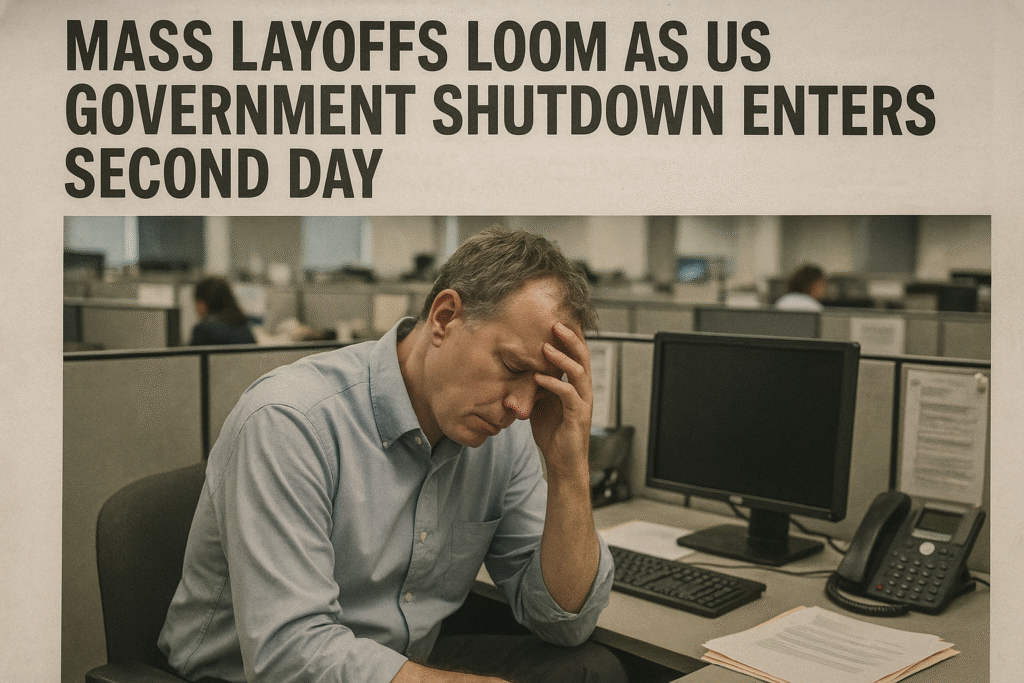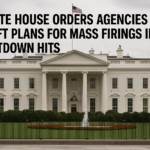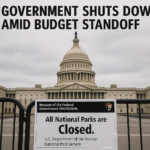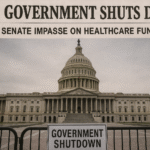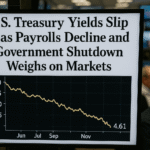By Harshit | October 2, 2025 | Washington, D.C. | 7:00 AM EDT
The US federal government has entered its second day of shutdown, raising fears of mass layoffs and potential permanent job losses for thousands of workers. The impasse comes after Republican and Democratic lawmakers failed to agree on a new spending plan, the first shutdown for nearly seven years.
The shutdown has placed roughly 40% of the federal workforce—about 750,000 employees—on temporary unpaid leave. Vice President JD Vance and White House Press Secretary Karoline Leavitt warned that permanent layoffs could occur imminently if the deadlock continues.
White House Signals Permanent Cuts
Speaking at a White House briefing on Wednesday, Vice President Vance said, “Let’s be honest, if this thing drags on, we are going to have to lay people off.” Leavitt indicated that cuts could happen “two days, imminent, very soon” and promised further updates.
President Donald Trump described the shutdown as an “opportunity” for Republicans to eliminate what he called “dead wood, waste, and fraud,” adding that billions of dollars could be saved. In a related move, the administration announced that $18 billion earmarked for infrastructure projects in New York City would be withheld, a city represented by Democratic congressional leaders.
Political Blame Game
Lawmakers continue to trade accusations. Senate Majority Leader John Thune criticized Democrats for allegedly prioritizing healthcare expansions over keeping the government open, calling their actions “taking the American people hostage.”
On the Democratic side, Senator Chuck Schumer argued that Republicans were attempting to “bully” Democrats into accepting a funding plan without guarantees for healthcare benefits for lower-income Americans. Senator Chris Murphy added that negotiations have stalled due to Republican intransigence.
House Minority Leader Hakeem Jeffries denied claims that Democrats were seeking to extend healthcare coverage to undocumented migrants, clarifying that federal law already prohibits such coverage.
Republicans, who control both chambers of Congress, do not have the 60 votes required to pass a funding bill, making compromise difficult. They have emphasized that keeping the government operational is a higher priority than expanding healthcare programs.
Impact on Federal Workers and Services
The shutdown affects both essential and non-essential federal employees. Essential personnel, including border agents, military staff, air traffic controllers, and TSA workers, are required to work without pay, while non-essential workers have been furloughed. In previous shutdowns, furloughed employees were later compensated retroactively.
Contractors who provide services to federal agencies are also expected to lose income, though historically they do not receive back pay during shutdowns.
The ongoing closure threatens billions of dollars in lost output for the US economy. Analysts predict that if the impasse continues, infrastructure projects, research programs, and public services may face significant delays.
Timeline and Outlook
The next vote on a short-term funding bill is scheduled for Friday, but there is little indication either side will compromise beforehand. Analysts suggest this shutdown could surpass the scale of the 2018-2019 closure, which saw partial furloughs and delays in government operations.
White House Budget Chief Russell Vought has briefed Republican lawmakers behind closed doors about the potential scope of layoffs, though public details remain limited.
President Trump has previously warned that a prolonged shutdown could allow the administration to make “irreversible” cuts to programs he considers priorities for Democrats.
Broader Implications
Government shutdowns not only affect employees but also disrupt travel, healthcare, infrastructure projects, and federal research. Non-essential services, including National Parks, museums, and other public institutions, may remain closed until a funding deal is reached.
The impasse highlights the ongoing partisan divide in Congress, with both parties framing the standoff as a strategic maneuver to gain leverage on policy priorities, particularly healthcare and federal spending.
The coming days will determine whether the shutdown escalates into widespread layoffs or if lawmakers reach a temporary compromise to reopen government operations.

